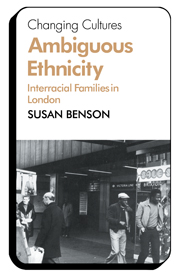Thoroughly Modern Mulatta: Rethinking “Old World” Stereotypes in a “New World” SettingPosted in Anthropology, Articles, Identity Development/Psychology, Media Archive, Oceania, Women on 2011-01-19 01:20Z by Steven |
Thoroughly Modern Mulatta: Rethinking “Old World” Stereotypes in a “New World” Setting
Biography
Volume 28, Number 1 (Winter 2005)
pages 104-116
E-ISSN: 1529-1456, Print ISSN: 0162-4962
DOI: 10.1353/bio.2005.0034
Maureen Perkins, Associate Professor of Sociology
Curtin University, Perth, Western Australia
This paper examines the role of racial stereotypes in the life narratives of several women of color living in Australia. While coming from very different parts of the world, all show an awareness of popular images of the mixed race woman. Their sensitivity on this issue points to the continuing effects of past racism and the globalization of colonial discourse, as well as hints at a sense of community based on color which crosses established “ethnic” boundaries.
In 2001 I interviewed seven women “of color” who had come to Australia from different countries and cultures. I talked with each of them about their childhoods and their experiences of growing up. Although interviewers have often used life stories to understand the collective, (1) the purpose of my interviews was not to construct a picture of Australian society. I was more interested in what could be called transcultural commonality, ways in which these women, while coming from different linguistic and socioeconomic backgrounds, felt that they could identify with “color” as a shorthand for certain types of understanding. I wanted to pursue the question of whether being a woman “of color” in a country which did not usually recognize this term in its lexicon of race and ethnicity actually provided a form of community that cut across more established “ethnic” identities. If it did so, it seemed to me that it would be the globalized nature of colonial discourse that created such a common understanding. It was, then, the points of intersection in these life stories that I set out to trace, rather than the specific context of individual narratives.
The meetings were, no doubt, greatly influenced by what I thought I shared with these women, and it would be no exaggeration to say that in some ways I was consciously learning about myself in the process. In asking specifically whether their skin color had been an issue in their childhoods, and whether they had felt it marked them out as different, I was using my own memories of growing up as a brown-skinned immigrant in 1950s London. Nevertheless, I tried to treat each contact as a conversation rather than a formal interview with specific questions. At no point did I introduce the term “mulatta” or “half-caste,” or even “mixed race,” but I did raise the question of whether they had experienced racism. Despite their very different backgrounds, all had experienced racism of some kind, and were acutely aware of its presence in Australian society. The history of colonialism was something that each referred to, though all were conscious of living much more liberated lives, in racial terms, than their parents had done.
Two historians of colonialism, Catherine Hall and Robert Young, have disagreed about whether the racial language of the past can change its meaning. Young writes that however many new meanings of “race” there are, the old refuse to die: “They rather accumulate in clusters of ever-increasing power, resonance and persuasion.” “So what,” is Hall’s reaction: “the origin of a word cannot determine its meanings across time” (127). The one key word about which they most disagree is “hybridity.” Young uses it in the subtitle of his influential book, Colonial Desire: Hybridity in Theory, Culture and Race. He believes that, while given different inflections, the word cannot stand outside the past, and in fact “reinvokes it” (“Response” 146). Hall, on the other hand, writes about the possibility of re-articulating meanings, and the need to consider the historical context in which people make new meanings from old words.
This debate between Hall and Young is central to understanding the role of color in modern Western societies. Race theory developed by Europeans in the nineteenth century placed a high value on purity. Miscegenation, or breeding between races, was seen as a “mis” take, and like all “mis” words would have a sorry outcome. The legacy of this period of history has been to render all of the terms describing mixed race offensive and painful to some people. Australian Aboriginal communities, for example, reject the term “half-caste” because of its connotations of “part” Aboriginality and its association with the removal of the stolen generations. (2) Werner Sollors writes of the difficulty of describing a condition which in its very conceptualization necessitates thinking racially. Julian Murphet calls the “mulatto” an “unspeakable concept.” In a British context, the distinguished sociologist of race Michael Banton wrote in 2001: “The use of race in English to identify certain kinds of groups sometimes leads to use of the expression ‘mixed-race,’ which is objectionable because of its implication that there are pure races” (185). Banton would not be alone in thinking the term “mixed race” offensive.
Yet Banton’s comments were going to press at the same time as the English census forms for 2001 were becoming available, with their whole new category of “mixed.” Similarly, in the United States, the 2000 census allowed citizens to identify as mixed race for the first time. In both countries, people of “mixed race” themselves have been amongst those agitating for the recognition that such a census category would give them. At the same time, “mixed race studies,” using postcolonial hybridity theory, have become increasingly influential. (3) Can the connotations of a word change, so that its historical traces no longer impact in new contexts?…
Read or purchase the article here.


